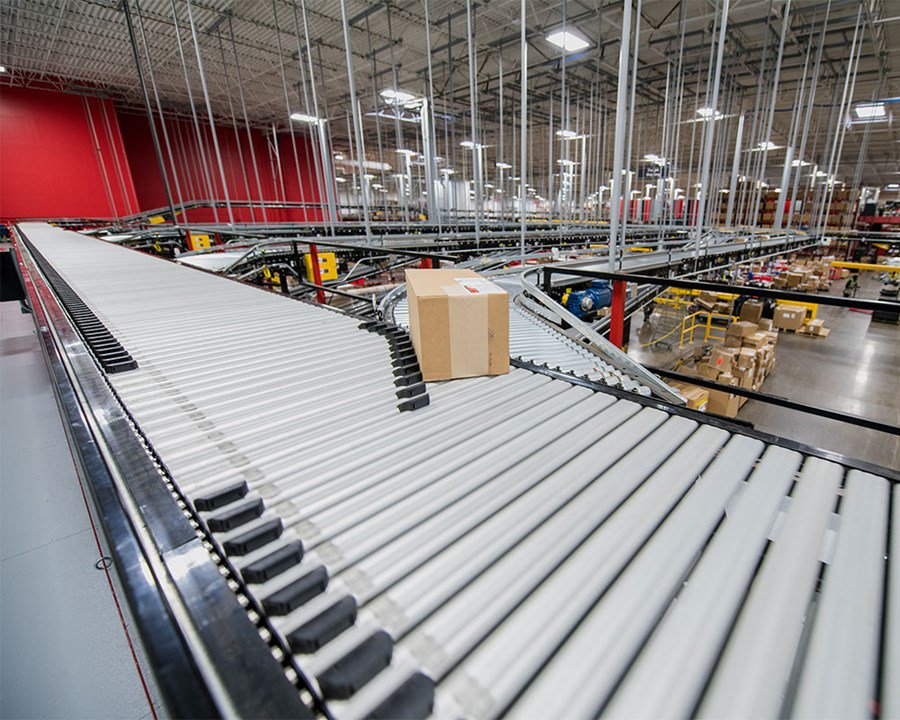
When is Standardized Software a Good Fit for Your Warehouse Automation
Sarah McKee | 15 May 2024
Historically, intralogistics software providers have been known for providing very customized solutions to meet the unique needs of their various manufacturing and distribution center clients. Being in the industry for over 70 years, Bastian Solutions has identified various universal industry processes and created a standardized product suite with offerings in addition to providing customized solutions all under our proprietary intralogistics software brand, Exacta®.
Defining a Standard Software Product
From our perspective, a standard software product can be described by the three following requirements. If the project’s scope falls outside of this definition, our software engineers can develop a curated solution that fulfills the entire request.
- A standard product has set functionality that project requirements must meet and cannot be customized.
- A standard product is configurable to meet certain project requirements if they are within the set functionality of the product.
- A standard product can be implemented faster than a customized solution.
Benefits of a Standard Software Product
- Cost efficient
- Faster project implementation
- Higher quality software solution
The configuration and development work of the standard software products have already been built and tested thoroughly through our quality assurance teams in addition to an automated test suite ran on the code nightly. Fewer resources are required to get the software up and running which allows for lower overall project cost and a quicker implementation. On average our standard product projects have shorter software lead times than custom/full suite projects by 4-8 weeks.
Standardized Software for Goods to Person Systems and Conveyor
Bastian Solutions has characterized common industry operations and created configurable options for putaway, picking and inventory maintenance. In a goods to person system like AutoStore™, your host system would interface with Exacta® to send orders to the system. Exacta then communicates with the AutoStore to fulfill the orders and send confirmations back to the host system.
The standardized software package includes a common interface communication structure and visibility into the system through a reporting web application. Additional optional functionality includes a touch screen desktop application is installed at each AutoStore port allowing an operator to complete picking, putaway and cycle count orders. Optional standardized conveyor routing can include pick routing, pack or ship sortation, in-line scale weight check/capture and in-line print and apply.
Standardized Software for Standalone Conveyor
With standalone conveyor, your host system would interface with Exacta to send container details, any printed material files and applicable routing information to the system. Exacta then sends back divert confirmations to provide real time tracking of the containers through the system. All systems include a standard interface communication structure and visibility into the system through a reporting web application. Optional functionality (that can be configured during installation and is determined based on project need) includes zone routing, sortation routing, weight check, weight capture and dimension capture.
Are Your Operations a Good Fit for a Standard Software Product?
Although there are clear benefits to standard products, they are not suited for every operation. Below are some things to consider when determining if a standard software package is a good fit.
- Flexibility - If you don’t have flexibility with your WMS or host system it could be more costly to meet the interface communication structure required for standard product software than going with the full suite version that can be customized.
- Automation - You need to consider what automation you may want to include in your operations long-term. If upstream or downstream automation is added to the operation, a full suite version of the software may be better suited to provide more flexibility long term. On the flip side, starting with a standard product package and upgrading to the full Exacta suite later allows for the potential project cost to be split up with a lower up front cost.
- Specific Requirements - If your operation has consistent requirements, a standard software offering could be the best fit. If, however, you have unique requirements or business rules that require custom logic, you might need custom approach. Reviewing the standard product requirements in depth is crucial in understanding if there are any limitations to your operational needs that would require a full suite version of the software. Some examples of special requirements that need to be considered are:
- Inventory that is managed at more than just the each UOM (unit of measure) level.
- Operations supporting manufacturing with raw materials or finished goods.
- Serial number capture or tracking processes.
- Picking or routing operations such as order release or wave management.
Understanding Your Intralogistics Software Automation Needs
The software aspect of an automated material handling system can be difficult to understand, define and implement. A one-size-fits-all approach to warehouse software could leave productivity gains on the table and restrict operational adaptability. However, a proven standard offering also comes with cost efficiency and faster implementation.
The Exacta intralogistics software suite is designed with the flexibility to maximize your straightforward goods-to-person fulfillment and conveyance operations or your complex, multi-technology warehouse systems. Reach out to one of software experts to see if a standard software package is right for your facility.
Sarah McKee is a Logistics Consultant and works as part of the sales team for Bastian Solutions’ software division located in Louisville, KY. She works with current and future clients to gather business requirements to incorporate in the software design of automated solutions. She has a Bachelor of Science degree in Industrial Engineering from Purdue University.
Comments
No comments have been posted to this Blog Post
Leave a Reply
Your email address will not be published.
Comment
Thank you for your comment.